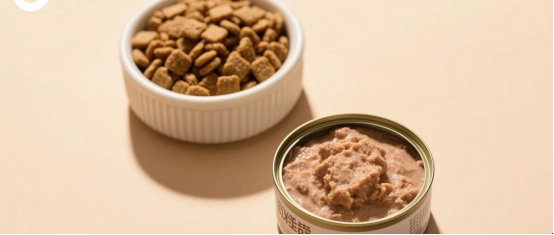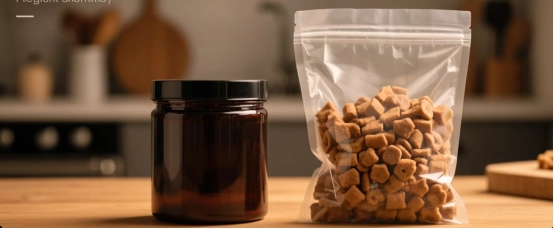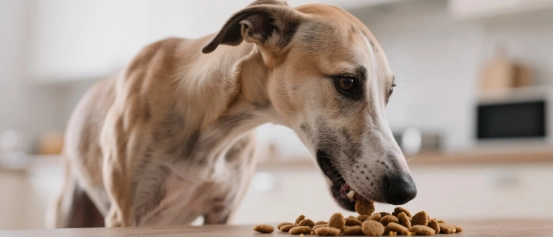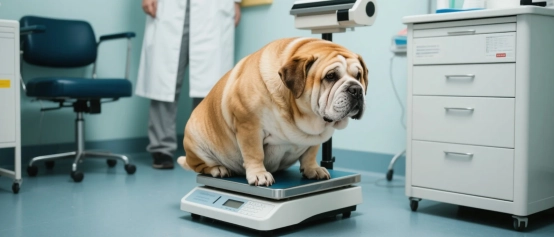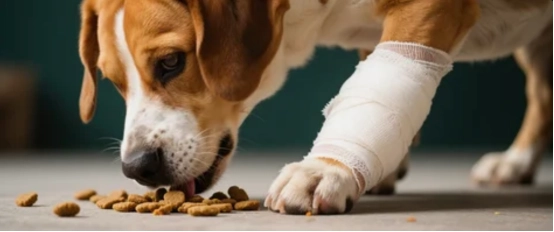
Choosing the right food for dogs in recovery from injury or illness is critical to ensuring a swift return to health and maintaining their well-being. Dogs in recovery often face challenges such as reduced energy, weakened immune systems, or increased tissue repair needs, necessitating nutrient-rich, easily digestible food tailored to support healing. This article explores the best food for recovering dogs from four perspectives: their nutritional needs, characteristics of high-quality recovery food, considerations when choosing, and feeding and care tips to guide pet owners in making informed decisions.
The nutritional needs of dogs in recovery vary depending on their condition, but the overarching goal is to provide a high-energy, nutrient-dense diet to support tissue repair, boost immunity, and restore strength. High-quality protein is central, with animal-based proteins (like chicken, turkey, or fish) supplying essential amino acids to repair damaged tissues and maintain muscle mass. Recovery food should contain 25%-35% protein to address protein loss from surgery, trauma, or illnesses like cancer or infections. Fats are a key calorie source, and premium food should include 15%-20% fat, preferably from Omega-3-rich sources (like fish oil), which offer anti-inflammatory benefits to reduce post-surgical swelling or inflammation from chronic conditions. Calorie needs vary—post-surgical dogs may require 10%-20% more calories than normal (about 400-500 kcal/cup), while less active or immobilized dogs need moderated calories to prevent obesity. Easily digestible carbohydrates (like white rice or sweet potatoes) provide gentle energy, minimizing digestive strain. Added vitamins and minerals (like zinc or vitamin E) support immunity, while probiotics and moderate fiber (3%-5%) promote gut health, enhancing nutrient absorption, especially for dogs with compromised digestion due to antibiotics or illness.
High-quality recovery food should be nutrient-dense, easily digestible, and formulated for specific needs. First, the ingredient list should feature clear animal protein sources, like "deboned chicken" or "salmon," avoiding "animal by-products" or low-quality fillers (like corn or wheat). Premium foods often highlight high-bioavailability proteins for efficient absorption. Second, fat sources should be animal-based or fish oil, not low-quality plant oils, to deliver calories and support anti-inflammation. Recovery foods may include functional ingredients, such as glucosamine and chondroitin for joint repair (ideal for fracture or joint surgery recovery) or L-glutamine for gut healing (suitable for gastrointestinal recovery). An AAFCO (Association of American Feed Control Officials) statement ensures nutritional standards are met. Wet food or soft dry kibble is particularly suitable for recovering dogs, with high moisture content (about 75%-80%), ease of chewing, and hydration benefits that reduce kidney strain. For example, Royal Canin Recovery or Hill's Prescription Diet a/d are designed for critical recovery, offering calorie-dense, highly digestible formulas for dogs with poor appetite.
Choosing recovery food requires customization based on the dog's specific condition and veterinary advice. First, consult your vet to understand recovery needs. Post-surgical dogs may need high-calorie, high-protein food, while those recovering from kidney or liver disease may require low-phosphorus, low-protein formulas. For instance, dogs recovering from cancer may benefit from low-carb, high-fat foods to limit tumor growth. Vets may recommend prescription diets or specific commercial foods, which should be followed closely. Second, consider the dog's age and size. Senior dogs in recovery may need lower calories but higher fiber to support digestion, while puppies require more calories for growth and repair. Dogs with poor appetite or dental damage benefit from wet food or softened kibble, and syringe-feeding liquid diets (like recovery canned food) may be necessary. For dogs with food allergies, select single-protein (e.g., duck or lamb) or hydrolyzed protein foods to avoid reactions. Monitoring the dog's response is critical—quality food should promote stable weight, improved energy, and wound healing. If diarrhea, vomiting, or appetite loss occurs, consult your vet to adjust the diet.
Scientific feeding and care can significantly enhance recovery. First, calculate daily portions using veterinary or food package guidelines, splitting into 3-4 small meals to ease digestion. For example, a 20-pound post-surgical dog may need 1.5-2 cups of high-calorie dry food (about 600 kcal) or 1-2 cans of recovery wet food daily. Measure portions precisely with a cup or scale to avoid overfeeding and obesity. For dogs with low appetite, warm wet food, add low-sodium broth, or hand-feed to boost interest, but avoid human foods or high-salt seasonings. Transition to new food gradually over 7-10 days, mixing with old food to prevent digestive upset. Ensure ample fresh water, as recovering dogs may dehydrate due to medications or illness; wet food or adding water to kibble increases hydration. Monitor weight and body condition weekly, aiming for a 0.5%-1% weekly weight gain (if underweight) or maintaining ideal condition (BCS 4-5/9). Consult your vet if weight changes are abnormal. Store food properly—keep dry food sealed in a cool, dry place and refrigerate opened wet food, using within 3-5 days to ensure freshness and nutrition.
Selecting the best food for dogs recovering from injury or illness involves understanding their nutritional needs, choosing high-quality food, and tailoring to their specific condition. Premium recovery food should be rich in bioavailable protein, moderate fat, digestible ingredients, and may include functional nutrients for repair. By working with your vet, monitoring responses, feeding scientifically, and storing food correctly, you can provide a diet that supports your dog's recovery. The right food not only speeds healing but lays the foundation for your dog's return to health and vitality, helping them resume a happy life.
